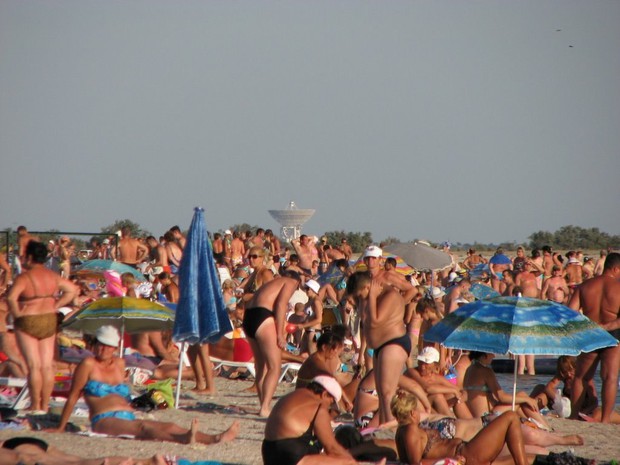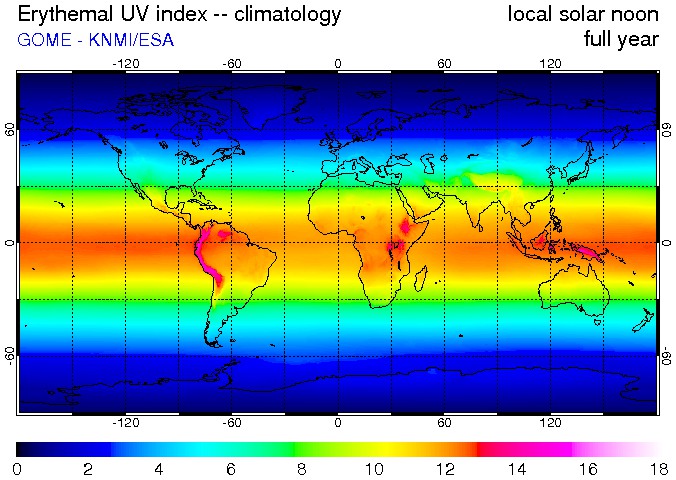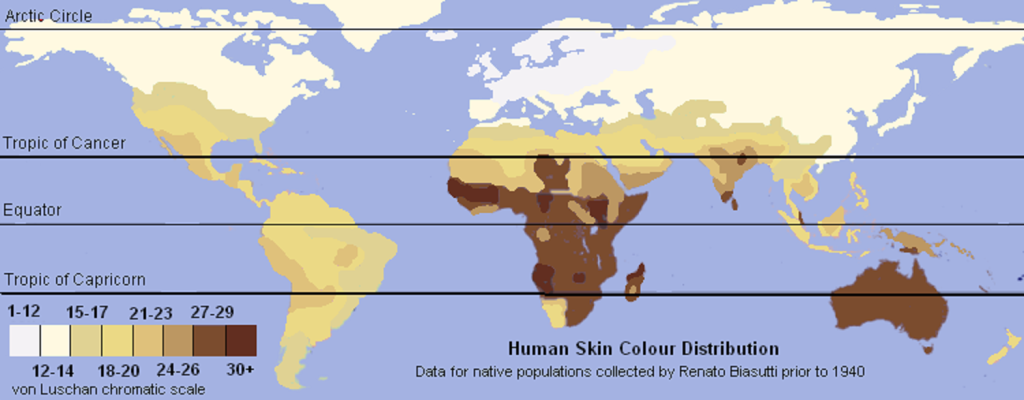High School | Daily Do
Why Do Some People Get Easily Sunburned?

Biology Crosscutting Concepts Disciplinary Core Ideas Is Lesson Plan Life Science NGSS Phenomena Science and Engineering Practices Three-Dimensional Learning High School Grades 9-12
Sensemaking Checklist




Welcome to NSTA's Daily Do
Teachers and families across the country are facing a new reality of providing opportunities for students to do science through distance and home learning. The Daily Do is one of the ways NSTA is supporting teachers and families with this endeavor. Each weekday, NSTA will share a sensemaking task teachers and families can use to engage their students in authentic, relevant science learning. We encourage families to make time for family science learning (science is a social process!) and are dedicated to helping students and their families find balance between learning science and the day-to-day responsibilities they have to stay healthy and safe.
Interested in learning about other ways NSTA is supporting teachers and families? Visit the NSTA homepage.
What Is Sensemaking?
Sensemaking is actively trying to figure out how the world works (science) or how to design solutions to problems (engineering). Students do science and engineering through the science and engineering practices. Engaging in these practices necessitates that students be part of a learning community to be able to share ideas, evaluate competing ideas, give and receive critique, and reach consensus. Whether this community of learners is made up of classmates or family members, students and adults build and refine science and engineering knowledge together.
Introduction
In today's Daily Do, Why do some people get sunburned?, students engage in science and engineering practices and use both patterns and cause-and-effect relationships as a lens to make sense of the phenomenon of getting a sunburn. Students have an opportunity to apply physical science concepts of electromagnetic radiation to develop life science ideas of variation in traits. This task has been modified from its design to be used by high school students, families, and teachers in distance learning. While students could complete this task independently, we encourage students to work virtually with peers or in the home with family members.
Before you begin the task, you may want to access the accompanying Why do some people get sunburned? Google Slide presentation.

What Am I Going to Figure Out Today? (Introduce the Phenomenon)
Show slide 2 and have students respond to this question:
- Have you ever gotten a sunburn?
Let students share their experiences. Some may have gotten a little red, developed blisters, or may not have ever been sunburned. After students share, ask this follow-up question:
- What are some patterns you notice about people who are easily sunburned and who are not easily sunburned?
The goal of this question is for students to start to think about skin color and environmental factors that can influence skin color. Be mindful with this discussion to focus only on the patterns students are noticing. Students may have the misconception that people with darker complexions cannot get sunburned or develop skin cancer. People with darker complexions can get sunburned and could develop skin cancer, but they need greater exposure to sunlight than persons with lighter complexions do.


What Does the Data Tell Us? (Analyzing Data)
Show slide 3 and explain to students that they are looking at two different maps. The map on the left shows ultraviolet (UV) radiation from the Sun. The map on the right shows human skin color distribution. Tell students to compare the information on the two maps. Use the following prompts:
- Examine the maps: What patterns do you notice in UV radiation levels and human skin color?
- What are you wondering?
- What claims can you make based on this data?
Students may give the following responses:
- Students may notice that areas with more intense UV radiation are inhabited by people with darker skin color, or vice versa.
- I wonder what is in our skin that controls skin color? (Depending on students' prior knowledge, they may mention melanin is what is controlling how light or dark someone's skin color is.)
- I wonder what UV radiation is? I think it comes from the Sun, and I know I need to wear sunscreen, but what is it?
- Students should make the claim that skin color and UV radiation are related. They may further identify that UV radiation controls skin color. Students might remark that their skin "gets darker" in the summer because there's more sunlight.
What Is UV Radiation? (Reading for Information)
Show slide 4 and have students link to the article "Ultraviolet (UV) Radiation: What Is UV Radiation?," by the American Cancer Society. Instruct students to use the Connect, Extend, Question reading protocol as they read the article.
In the Connect, Extend, Question reading protocol, students use these ideas to do the following:
- Connect to their prior knowledge: What did they read about that they already knew?
- Extend their prior knowledge: How did what they read extend their knowledge? What new things did they learn?
- Question. Develop new questions to information they read about.
Engage students in a discussion and ask them what reflections they have on the article after reading and using the Connect, Extend, Question protocol. Accept all student answers. Students may have questions about the role of Vitamin D and why it was mentioned in the article. This idea will be developed later in the lesson.
What Structure in Our Cells Controls Skin Color? (Watch a Video for Information)
Tell students that you've found a video that might help them gather more data to determine what structure in our skin is controlling skin color and to find out if their claims are correct. Show slide 5 and play The Biology of Skin Color video from 1:38 to 9:08. Ask students what they've figured out from the video. Students should identify the following:
- There are different types of melanin: pheomelanin and eumelanin.
- Increased eumelanin causes darker skin color.
- Melanin acts as a cap to protect the DNA in our skin cells from UV radiation.
What Is the Role of Evolution? (Problematizing)
Show slide 6 and ask students, "What role does evolution play?" The goal of this discussion is to problematize what they have just figured out and begin to shift their thinking into answering this question: Why is it an advantage, or disadvantage, to have different types of melanin in different parts of the world?
Students may struggle to relate evolution to skin color or to make the connection regarding why skin color matters. Say to students, "Let's watch some more of the video to see if it can help us make the connection." Show slide 7 and play the video from 9:09 to 13:43.
After playing the video segment, give students the opportunity to brainstorm what data they might need to determine the answer to this question: Why aren't we all dark skinned? If students are struggling, remind them about what they figured out in the "Ultraviolet (UV) Radiation: What Is UV Radiation?" article. You may want to use this prompt:
- What nutrients does the body make after UV exposure?
Students need to identify that Vitamin D production may be a key to understanding what advantage the different types of melanin may give people living in different parts of the world.
Why Is Vitamin D So Important? (Research for Information)
Show slide 8 and give students a few minutes to do some internet research on what role Vitamin D plays in the body. Ask students to share what they found. Students should identify the following:
- Helps our bodies absorb calcium to maintain healthy bones.
- Helps modulate cell growth.
- Helps with neuromuscular and immune function.
- Helps reduce inflammation.
Ask students to think about, then discuss, this prompt:
- What do you think happens if we don't have enough Vitamin D?
Students may respond by saying that our bones might not be as strong or other related issues with our bones.
Say to students, "But I was wondering about how in some areas of the world where we'd expect to see people with lighter skin color, like Alaska, native people have darker skin. How would they be able to have healthy bones if their darker skin couldn't make enough Vitamin D?"
Allow students to discuss their ideas. They should identify that we don't just get Vitamin D from exposure to sunlight, but also from our diet. Guide students to infer that while they couldn't synthesize enough Vitamin D from sunlight, they had a diet rich in food containing Vitamin D.
What Did We Figure Out? (Making Sense)
Show slide 9 and give students a few minutes to reflect on what they've figured out before asking them to answer this prompt:
- How did environment shape the variation of skin color we see in humans? (This prompt can be used as a formative assessment.)
Students should identify the following:
- Melanin protects our DNA from UV radiation and prevents folate from being broken down in our bodies.
- We need to absorb some UV radiation so we can make Vitamin D, but we can also get Vitamin D from our diets.
- As people moved from areas with higher UV radiation to areas with lower UV radiation, our skin became lighter because we didn't need to prevent the breakdown of folate and we needed to absorb more UV radiation to make Vitamin D.
- People with diets high in Vitamin D were able to maintain a darker skin color in areas with less UV radiation.
Show slide 10 and play the video from 16:10 to 18:57. Ask students to answer this question:
- Why do some people get sunburned?
Student answers should reflect the understanding they have figured out from the lesson.
NSTA Collection of Resources for Today's Daily Do
NSTA has created a Why do some people get sunburned? collection of resources to support teachers and families using this task. If you're an NSTA member, you can add this collection to your library by clicking Add to My Library, located near the top of the page (at right in the blue box).
Check Out Previous Daily Dos From NSTA
The NSTA Daily Do is an open educational resource (OER) and can be used by educators and families providing students distance and home science learning. Access the entire collection of NSTA Daily Dos.
Acknowledgments
This lesson uses information from HHMI Biointeractive's video The Biology of Skin Color.

